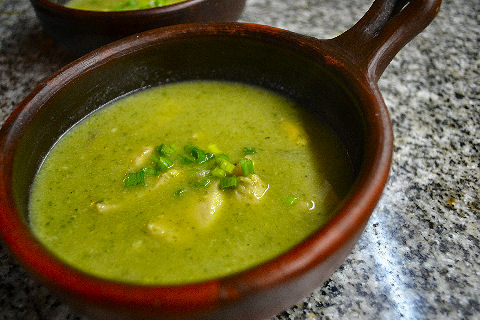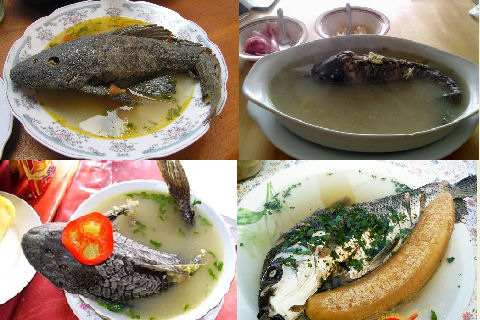
Although I’ve given this soup a bit of a write-up in the past, I’ve never really laid it out step-by-step. It’s one of our favorites, and it’s actually quite simple to make, and you can vary it quite easily. It’s our version of Timbuche, a traditional soup of the Peruvian Amazon basin. Variously, it’s described as thick or thin, generally featuring cilantro, though often other herbs, and including freshwater fish, most often cooked whole, in the soup, though I’ve seen versions that use fillets, and others that use various freshwater shellfish, like river snails, cockles, mussels, and shrimp. I have the feeling that were we to have a linguist among us, it would probably turn out that timbuche simply means soup, or river soup, or something of that sort, in one or another of the local languages.
Our version is quite different from anything I’ve seen traditionally, it’s more of an “inspired by” sort of soup. Here are a few photos lifted from one or another sites around the internet of what the soup tends to look like.

On to our version:
In a pot, slowly cook a couple of sliced yellow onions, two chopped cloves of garlic, and a chopped rocoto chili (remove the seeds with this kind of chili – if you can’t find them, choose another medium hot chili) in a little olive oil until soft and just starting to color, maybe 15-20 minutes. Add a large, peeled and cubed potato, top the pot off with stock – I usually make a mixed stock of fish bones, some shrimp and other shellfish shells, but you can use vegetable stock or chicken stock and it will be just fine. I also have no issue with fish or shrimp bouillon cubes and water. I usually put in about a half teaspoon of aji no moto (msg) to give it some umami kick, and some white pepper. Simmer away until the potatoes are soft, then puree the whole thing (probably in two batches), with a good bunch of both cilantro and parsley, stems and all. If you’re one of those people for whom cilantro just tastes like soap, use just parsley, or a mix of it and other herbs of your choice. Add salt and/or more white pepper if needed.
I put it back in the pot and add, usually, a mix of mussels and shrimp, and two or three varieties of fish, cut in bite sized pieces, and just bring it back to a simmer long enough to cook them through. I usually aim for freshwater fish, just as a nod to the traditional (most of which seems to use carachama, a sort of armored catfish, you can see examples of it on our tour of the Belen Market in Iquitos) – trout, catfish, pacú (a type of piranha), but really, any fish you like, and the broth is equally delicious with chicken, or even just with a mix of vegetables in it as a vegetarian soup (obviously using vegetable stock).